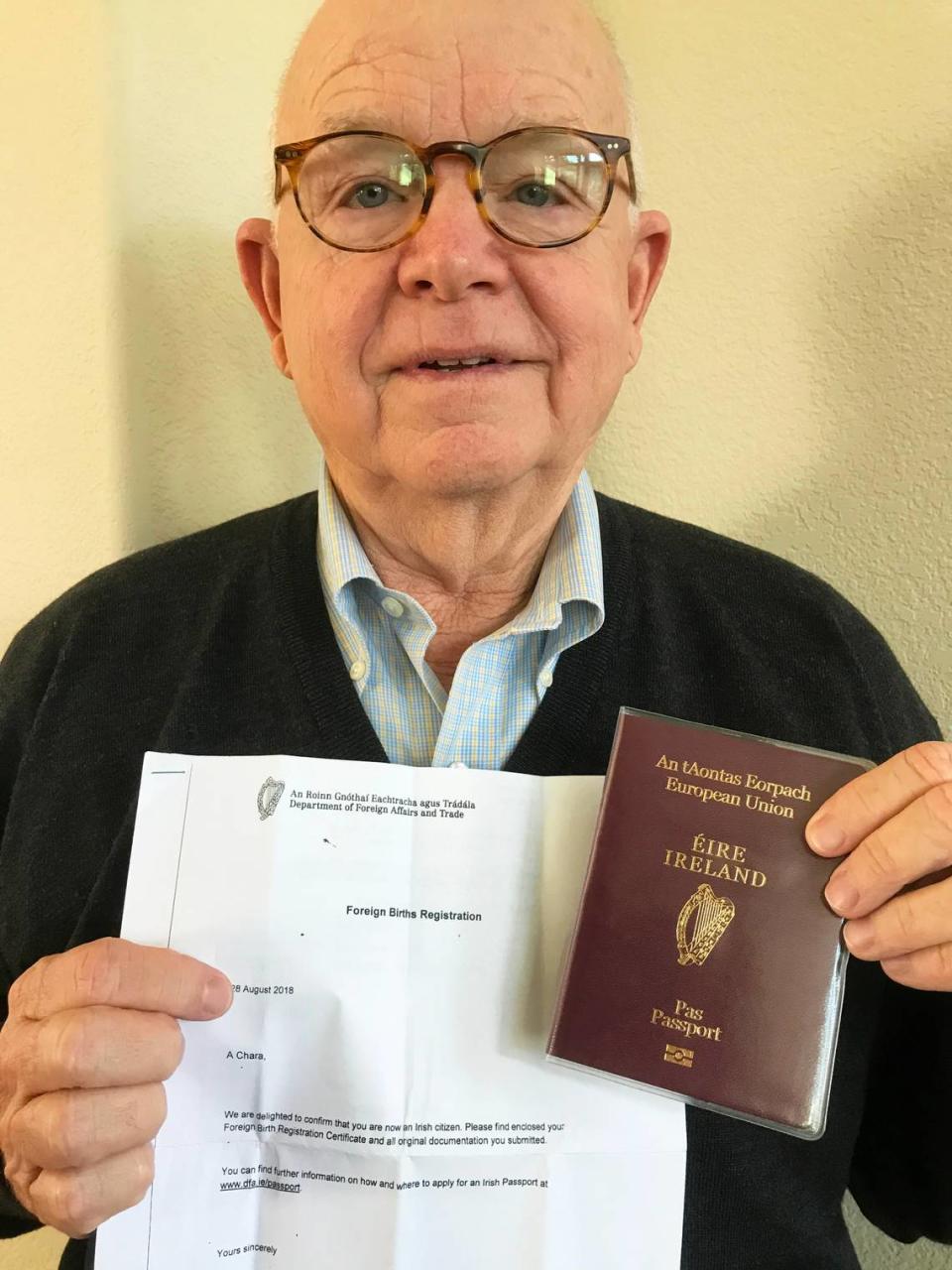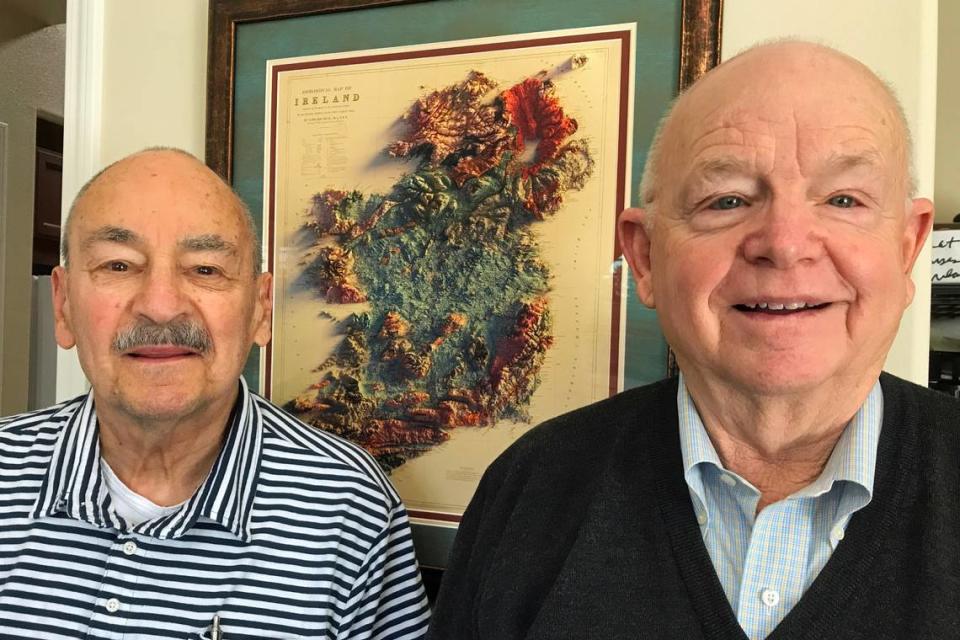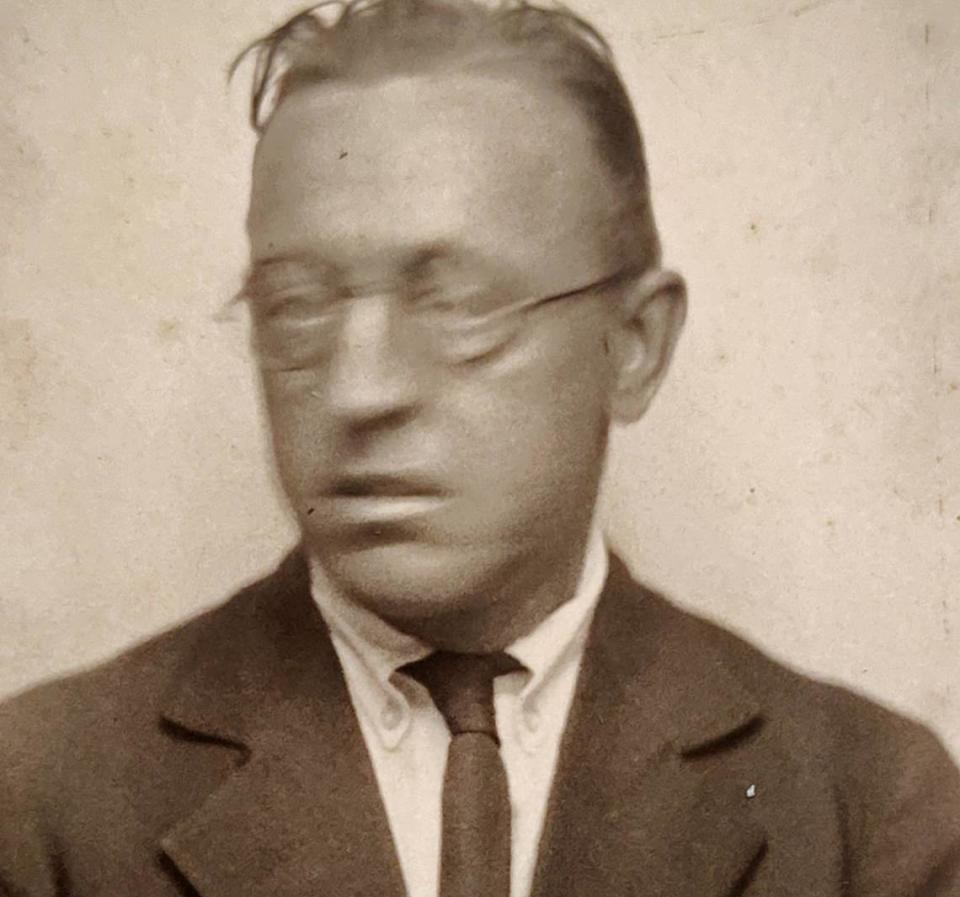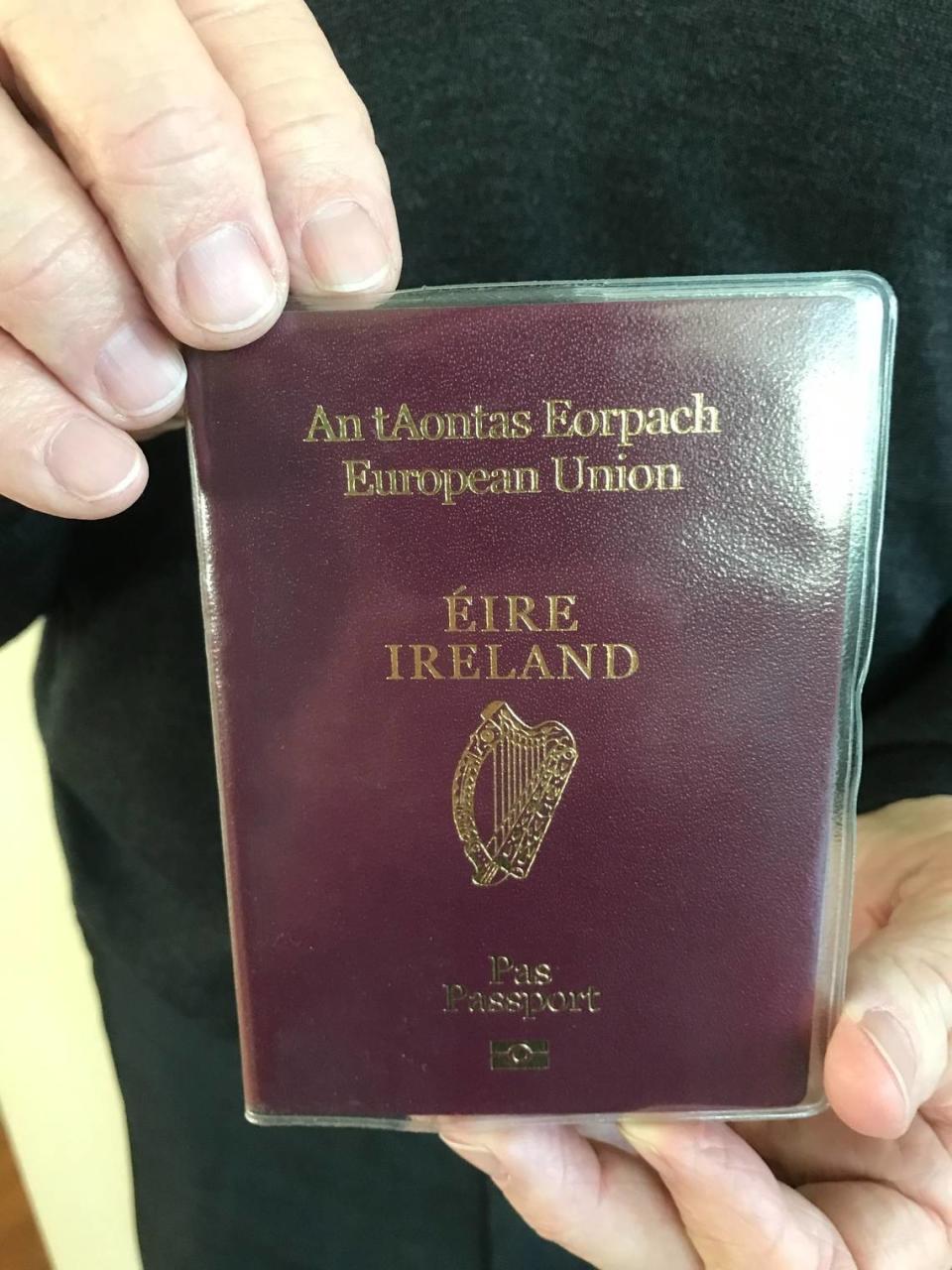‘Irish through and through.’ SLO County man spends 2 years seeking dual citizenship
Have you ever wondered what it would be like to live in a foreign country as a citizen, rather than a tourist?
For decades, Mike Lyons of Cambria yearned subtly for that kind of connection to the land of his forbears, Ireland.
A British Isles tour and a family photo finally prompted Lyons to begin the complex process of becoming an official Irishman.
The 76-year-old wouldn’t even have to renounce his U.S. citizenship to achieve that aim. If his attempt was successful, he could be a citizen of both countries he loves.
“In an effort to attract well-educated Irish people back to Ireland from their diaspora, the government established a new Foreign Births Register program” for those who have a parent or grandparent who was born in Ireland, Lyons explained.
The program is “designed to repatriate descendants whose ancestors had fled the country,” Lyons said, “perhaps during the Great Famine” of the 1840s, when as many as 2 million people emigrated from Ireland.
“They allowed people to apply for citizenship even back to their grandparents, since so many generations of Irish had left their own county in the late 1800s through about 1975,” he said.

However, as Lyons and others have discovered, it’s neither easy nor quick to get dual citizenship.
“The U.S. State Department discourages U.S. citizens from retaining or applying for citizenship in another country because dual nationality may limit U.S. government efforts to assist nationals abroad,’ “ the Los Angeles Times editorial board wrote in 2014.
It’s not clear how many dual nationals live in the United States, the L.A. Times said, because neither the U.S. nor foreign countries keep track of them.
SLO County man is world traveler
As a child and teenager, Lyons had traveled a lot with his military family, often staying in new places for less than a year.
Rather than being “damaged by all the uncertainty of ‘Where is home?’, leaving new friends behind and constantly getting used to new environments, instead, I reveled in it,” he recalled, and “looked forward to the new adventures.”
“Never very shy, I made new friends and got used to unfamiliar towns, houses and schools from the basic stability of my own family, no matter where we were,” Lyons said.
Lyons described his father, Danny Lyons, as “Irish through and through, in heritage, stature, visage, name and ... character.”
As an adult, Mike Lyons became an import-export businessman.
“My 51 years of working took me all over the globe,” he said.
Fortunately, his husband, 89-year-old Dick Morse, also loves to travel.
The couple found that they preferred “longer stays in one place, which helped us feel like we were not so much Yank tourists but a little bit of ‘them,’” Lyons said. “So the attraction of becoming a dual citizen was there for a long time, but I never thought that it would be possible for me … until the Irish program came along.”

Cambria resident seeks dual citizenship
Lyons said he’d sought Irish citizenship after he and Morse fell in love with the Emerald Isle on their tour of the British Isles.
During that excursion, Lyons said, “Some of the others on the tour asked our savvy tour guide about living in Ireland and the possibility of immigrating. The guide was encouraging about it … even mentioning the repatriation program.”
However, when Lyons asked if his grandfather, John Lyons, had been born in Ireland, his father waffled a bit, saying “I don’t think so.”
“Dad was proud of his roots but did not know much about his family’s history since his father died when he was quite young,” Mike Lyons said.
“I have a hunch that there was a skeleton, or perhaps even a minor scandal, in granddad’s closet,” he added with a grin. “So little was known, or at least said, about him.”
After Lyons’ father died in 2011, a cousin showed Mike Lyons a family album he’d never seen before, including a photo of his grandfather as a teen in about 1900, standing in front of the family home in Belfast.
The cousin confirmed that John Lyons had, indeed, been born in Ireland.
“The dots began to connect. I was blown away,”said Lyons, who began his efforts to become a dual national soon after that.

Foreign national status a goal for many
Lyons isn’t the only North Coast resident seeking dual citizenship.
Mike Calderwood of Cambria, for instance, hopes to get his Irish citizenship papers and passport soon, having started his application process in early 2020.
Calderwood visited Ireland and found it “very soul touching,” he said.
He’d also been attracted to the dual-citizenship idea because of his upbringing in an Irish neighborhood in New York.
He had an easier time putting his package together for the Foreign Births Registration program, because his younger sister already had collected all the documents she needed to get an Irish passport.
Calderwood said his sister’s success spurred him to attempt the same feat.
When his sister sent him her documentation, Calderwood added his own, waded through what he called “a very difficult website to navigate,” and sent the notarized application almost three years ago.
Then he waited.
That summer, the program organizers confirmed they’d received his documents, but Calderwood hadn’t heard anything else until about six weeks ago, when an official called to ask if his address is still the same.
Even the Tanner family has tried to achieve dual citizenship.
One of our granddaughters moved to Europe, then immediately fell in love with Sicily. The 23-year-old tried very diligently to become a dual citizen of the United States and Italy, based on my half-Sicilian heritage and grandparents who immigrated to America in the early 20th century.
Much to her disappointment, we lack just one crucial document needed to make that happen, despite having kind relatives on both sides of the Atlantic trying to help.
The missing document likely was among the many lost or destroyed during one of the two world wars.
If the dual citizenship process seems too daunting, there are other ways to make a life overseas.
Our friends Richard and Christine Greek are seeking to renew their five-year residence permit in Hungary, where their son, Coast Union High School grad Kristopher Greek and his family live.
The Greeks, who were world travelers when Kristopher was growing up, got their first residence permit in 2017.
The designation allows them to travel to Hungary more often each year, and for longer periods, to visit Kris, his wife Adrienne and their children Zoli and Esheme.

Trip to Ireland planned
Meanwhile, Lyons has completed his journey to Irish citizenship.
“With lots of help along the way from many kind and thoughtful Irish folks, I assembled the necessary documents,” Lyons said, including an original, long-form marriage license for his parents.
That was tricky because only certified copies were available from the state of Texas, which hadn’t retained original records from before 1954.
On his birthday in September 2018, he finally got the notice he’d been working so hard to get: A letter from the Irish Department of Foreign Affairs telling him that his application for dual citizenship had been approved.
“I was overjoyed beyond words to open the envelope and read the document awarding me citizenship in the Republic of Ireland,” Lyons said.
He and Morse are planning their fifth visit to Ireland since Lyons received those two precious documents.
Lyons’ Irish passport allows them to visit Ireland and stay as long as they want.
They can also go between there, the United States and other European countries at will and even move to the Emerald Isle, if they wish.
“We would love to live in Ireland someday, even just part-time,” Lyons said, although he plans to keep Cambria as his home base.”

